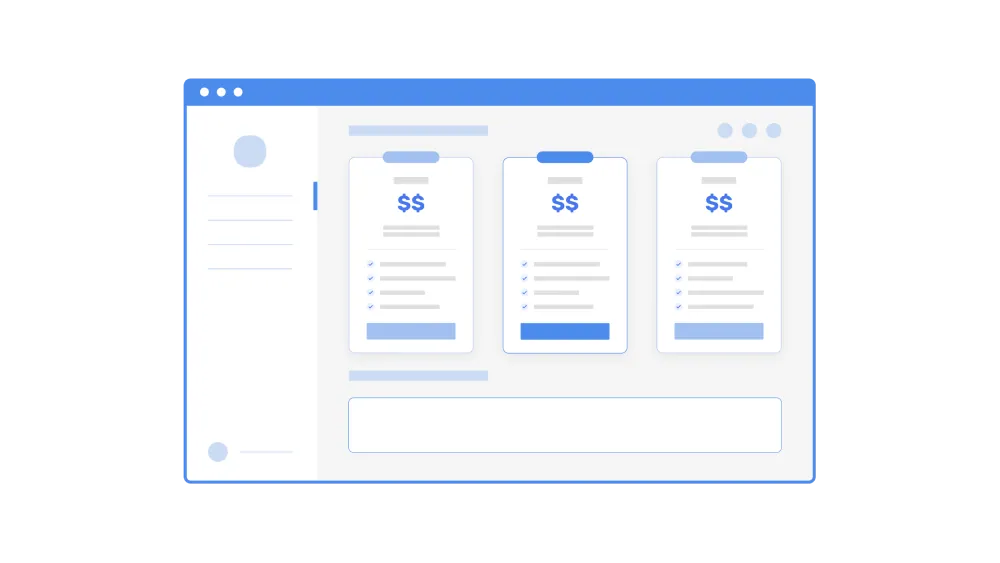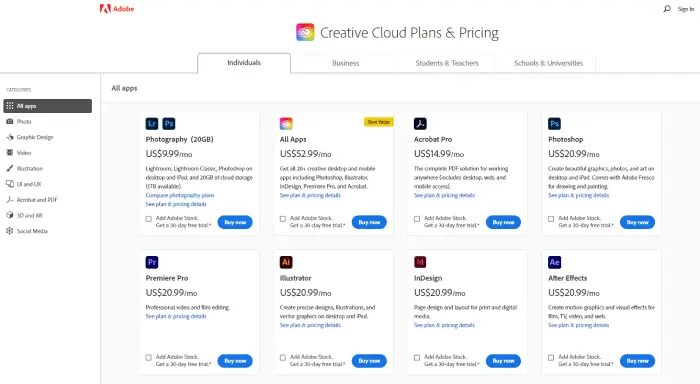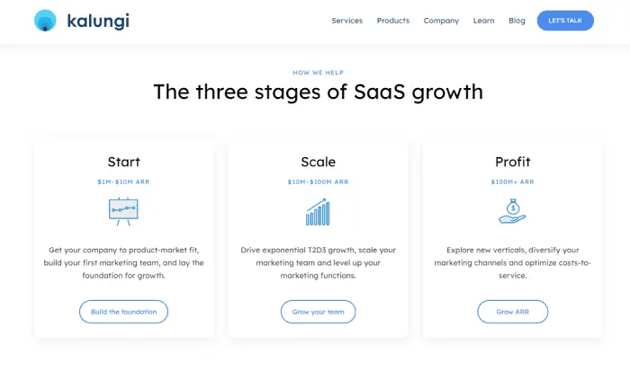Pricing: Which Marketing Automation System Is Best For You?
You're looking for a Marketing Automation System. Here is a price comparison of some of the options. We hope having all the pricing in one place is...

When was the last time you evaluated your SaaS pricing model?
And this doesn’t refer to the last time you raised your prices.
Unless you have drastically changed your business approach, the last time you thought about this was likely before your business launched –when you were still planning.
Whether you’re a SaaS company that’s been in the market for a while or you’re getting ready to launch your GTM strategy, it’s important to choose the right pricing plan to maximize profits and set yourself up for success.
In our rapidly changing digital world, value-based pricing is key for your SaaS company. In this blog, we’re going to cover:
Switching your entire pricing system is not easy and requires thought, planning, and an open mind. However, the last thing you want to do is undersell your product or leave precious resources on the table.
Let’s get into value-based pricing, and why your SaaS company should reevaluate its pricing strategy.
Value-based pricing is a method of determining what to charge for your company's products and services.
To calculate value-based pricing for your software, you might factor in the cost of labor and production and then add a mark-up. Or you could go the one-price-fits-all route.
These pricing models might work for goods such as clothing, or products like a treadmill. However, in the world of software, you’re constantly updating and improving your products.
Product development and evolution are integral pieces of SaaS offerings, and if you follow traditional pricing strategies, you’re undervaluing your service.
So what exactly is value-based pricing? Value-based pricing for software companies is when you charge users for the value your product offers. Yes, it’s that simple.
The tricky part is determining if your customers view your service or product as valuable. Charge too much, and you’ll lose customers. Charge too little, and you’ll lose revenue.
So let’s talk about the best way to add value to your product.
There are three key areas to examine when looking at product value: users, integrations, and feature functionality.
With each of these points, think about:
Let’s break it down further:
The more users on your software, the more valuable it is. A company with only five active users isn’t going to have a competitive edge over a similar company with 5,000 active users.
If a customer is doing research, the fact that more people flock to one SaaS provider over another will naturally show a clear winner. Even if the company with five active users has an edge such as better customer support, they appear less valuable to prospects.
When framing value-based pricing, think about how you can attract more users to your platform. Perhaps you offer a discount to a company when they purchase more seats. Or maybe they’ll receive more integrations to partner platforms or storage features by upgrading the number of users.
Take a good look at how you can break up your services and incentivize more users to choose your platform. You’ll add value to your SaaS business by sheer numbers alone.
The more connected your software is to other systems, the more valuable it becomes. Let’s look at HubSpot, for example. They offer interconnected marketing, sales, CMS, operations, and service platforms.
If you’re already on HubSpot’s marketing platform but you’re also looking for a sales system, would you hire a team of developers to build a custom solution prone to breaking with every HubSpot update? Or, would you rather add on HubSpot’s sales platform? For many decision-makers, the obvious answer is the hassle-free one.
By offering additional integrations, you’re adding value to your products by saving the user time, effort, money, updates, and stress. It’s all about making the customer’s life easier. If your platform can do that, you can charge a higher price because you’re adding much more value.
Lastly, software is more valuable when users can do more with it through features and capabilities. The tricky part is showing off your feature functionality, and what people can gain by using your system.
An easy way to add value to your products is through a ‘freemium.’ Then, offer subsequent paid pricing tiers.
As the prices go up for each tier, so do the features and capabilities available. Maybe your free tier offers email support at fixed hours, but the next level offers live, 24/7 support. Suddenly, this feature makes tier two that worth much more.
Don't forget to check in with your users to find out if they’re happy with your features through quick surveys or periodic pulse checks.
What features do they like and use often? What features do they wish your SaaS business offered? Make your service more valuable to your users by actively listening and implementing their feedback.
Using these three considerations, evaluate and apply them to your company’s business model. They all work hand-in-hand.
The more features and integrations you offer, the more users you attract and the more valuable your company becomes.
And, by showing your customers the value they are getting by paying for your product, you can upsell and increase your revenue.
Now that you have an idea of how to add value to your services, let’s talk about the benefits of switching to a value-based pricing system.
Acquiring customers just keeps getting more and more expensive. If you don’t know your Customer Acquisition Cost (CAC), read about how to manage the cost per lead.
When you switch to value-based pricing, you’re more likely to attract a loyal customer base who are less likely to leave you for another SaaS product.
Suddenly, you find yourself retaining customers at a higher rate—and it’s much less expensive to retain customers than add new ones. This also helps boost your SaaS valuation multiples if you’re looking to sell in the upcoming years.
One of the best marketing tools out there is word of mouth.
After all, according to Forbes, 92% of consumers believe recommendations from friends and family over all forms of advertising.
If you price your SaaS product at its value and your users agree with you, they will be more than happy to tell their family, friends, and colleagues.
Offer a product with enough features, integrations, and personal touch, and your customer base will make noise for you.
Instead of a one-price-fits-all model, you are showing your customers what they gain by paying for the value.
This adds a sense of ownership and pride –they are getting their money’s worth by using your service.
Plus, by integrating feedback for your SaaS business, you show your customers that you care about their opinions. That personal touch is sometimes just enough to put you ahead of the competition and gain an edge.
You know what value-based pricing is, how to add value to your service, and the benefits of switching your pricing model.
Now let’s look at some examples of companies who enact value-based pricing well.
Trello is a great example of a company that uses a “freemium” tier to hook users and then upsell with integrations and features.
.webp?width=630&height=433&name=SaaS%20value%20based%20pricing%20example%20Trello-min%201%20(1).webp)
The free version of Trello offers plenty of great features for users. However, the paid versions add so much more.
People are willing to pay more for integrations, features, and more users. As a SaaS company, they have nailed adding value to their product while still attracting users at the base level.
Adobe pivoted to a value-based subscription model back in 2012. People used to do one-time, expensive purchases for Adobe products.
If any updates came out, they would have to re-purchase the software. This wasn’t a sustainable business model, so Adobe introduced a monthly subscription model for the entire creative cloud.

Although more expensive in the long run, people still pay monthly to access all of Adobe’s most recent features.
In addition to quick access, users know that they will always have the most up-to-date version available. Now, Adobe’s customer base is hundreds of thousands of individual users and companies. Adobe knows their value –and charges accordingly!
In the world of marketing agencies, there are several ways to invoice for work. There’s an hourly rate, fixed price à la carte, or retainers.

At Kalungi, we operate on value-based pricing. We ask “how much value is the work I do for you?” We look at how much ROI we deliver to our clients and assign value based on return.
Whether it’s our full-service marketing or our proven SaaS marketing playbook, we price our offers based on the value you get out of it.
Hopefully, the examples we provided will give you inspiration as you sit down and evaluate how you want to value your product.
Keep the following in mind:
The value-based pricing model for SaaS companies is not going anywhere. If anything, more and more companies are going to switch. And if you want to learn more about SaaS pricing models, read our blog.
You're looking for a Marketing Automation System. Here is a price comparison of some of the options. We hope having all the pricing in one place is...
Developing your pricing strategy for SaaS products is one of the most strategic activities of the SaaS Chief Marketing Officer. Learn about our SaaS...
Struggling with SaaS pricing? Discover the top SaaS pricing models, strategies, and frameworks to maximize growth, optimize revenue, and reduce churn.
Be the first to know about new B2B SaaS Marketing insights to build or refine your marketing function with the tools and knowledge of today’s industry.